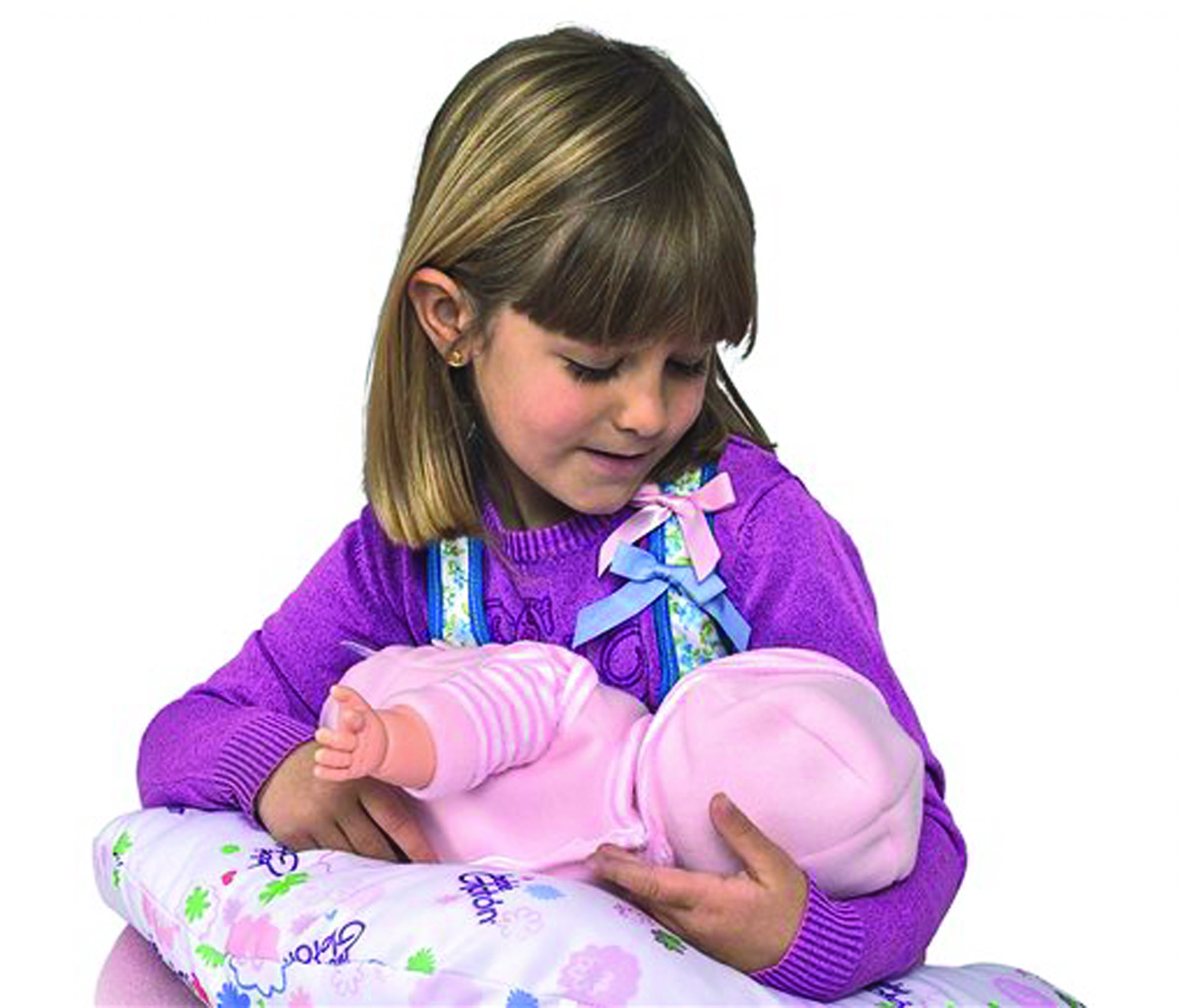By Leanne Italie
The Associated Press
NEW YORK — We’ve got dolls that wet, crawl and talk.
We’ve got dolls with perfect hourglass figures.
We’ve got dolls with swagger.
And we’ve got plenty that come with itty bitty baby bottles.
But it’s a breastfeeding doll whose suckling sounds are prompted by sensors sewn into a halter top at the nipples of little girls that caught some flak after hitting the U.S. market.
“I just want the kids to be kids,” Bill O’Reilly said on his Fox News show when he learned of the Breast Milk Baby. “And this kind of stuff, we don’t need this.”
What, exactly, people don’t need is unclear to Dennis Lewis, the U.S. representative for Berjuan Toys, a family-owned, 40-year-old doll-maker in Spain that can’t get the dolls onto mainstream shelves more than a year after introducing the line in this country — and blowing O’Reilly’s and others’ minds.
“We’ve had a lot of support from lots of breastfeeding organizations, lots of mothers, lots of educators,” said Lewis in Orlando, Fla.
“There also has been a lot of blowback from people who maybe haven’t thought to think about really why the doll is there and what its purpose is.
“Usually, they are people that either have problems with breastfeeding in general, or they see it as something sexual.”
The dolls, eight in all with a variety of skin tones and facial features, look like many others, until children don the little top with petal appliques at the nipples.
That’s where the sensors are located, setting off the suckling noise when the doll’s mouth makes contact.
It also burps and cries, but those sounds don’t require contact at the breast.
Little Savannah and Tony, Cameron and Jessica, Lilyang and Jeremiah ain’t cheap at $89 a pop.
Lewis, after unsuccessfully peddling them to retailers large and small, now has them listed at half-price on their website in time for the holidays this year.
“With retailers, it’s been hard, to be perfectly honest, but not so much because they’ve been against the products,” he said.
“It’s more they’ve been very wary of the controversy. It’s a product that you either love it or you hate it.”
Critics cite an unspecified yuck factor, or say it’s too mature for children.
But Stevanne Auerbach loves it.
The child-development expert in San Francisco, also known as Dr. Toy, evaluates dolls and other toys for consumers, lending her official approval to Breast Milk Baby.
“We felt that it had merit in dealing with new babies for the older child,” she said, “and for the curiosity that children have in this area.
“Breastfeeding in Europe is acceptable, and the doll has been successful there. We wanted to open up the opportunity.”
Sally Wendkos Olds, who wrote The Complete Book of Breastfeeding, also doesn’t understand the problem.
“I think it’s a very cute toy,” she said.
“I think it’s just crazy what Bill O’Reilly was saying that it’s sexualizing little girls. The whole point is that so many people in our society persist in sexualizing breastfeeding, where in so many other countries around the world, they don’t think anything of it.”
Olds called Americans “prudish in many ways,” adding that the doll offers “bodily awareness. It’s realizing that this is OK.”
Lewis blames lack of U.S. sales — just under 5,000 dolls sold in the past year — solely on phobia about breastfeeding, something widely considered the healthiest way to feed a baby.
“There’s no doubt about that,” he said.
“The whole idea is that there’s still some taboos here.
“They’re difficult to justify and difficult to explain, but they’re out there.
“You mention breast, and people automatically start thinking Janet Jackson or wardrobe malfunctions and all sorts of things that have absolutely nothing to do with breastfeeding.”
Lewis considers Breast Milk Baby “very much less sexualized” than Barbie dolls or the sassy Bratz pack.
Olds, who lives in New York City, agreed, though she thinks the doll’s full retail price is too high.
“That’s my only objection to it. It’s a lot of money, but people spend a lot of money on their children in all sorts of ways.”
